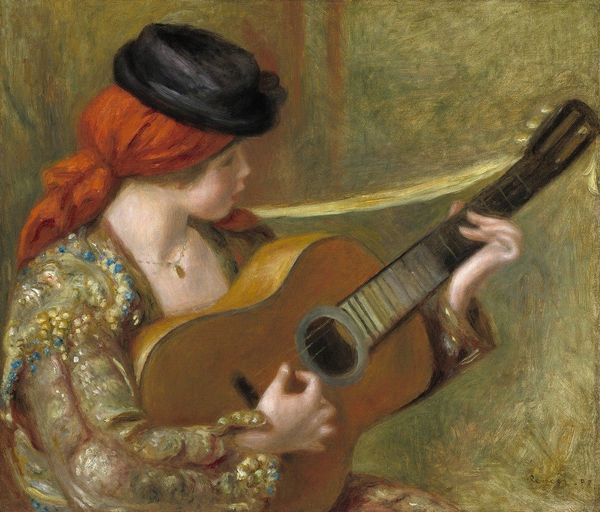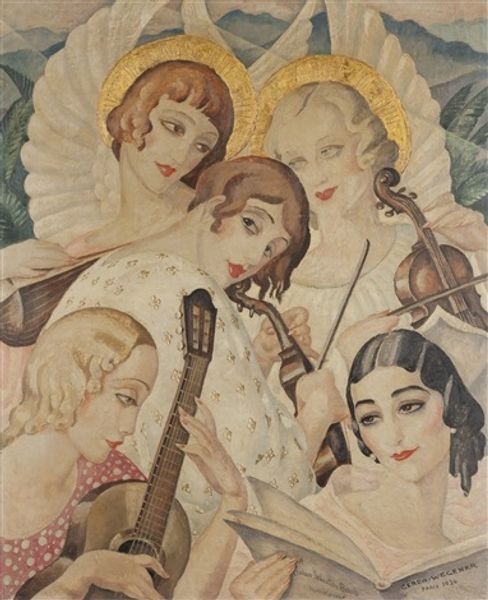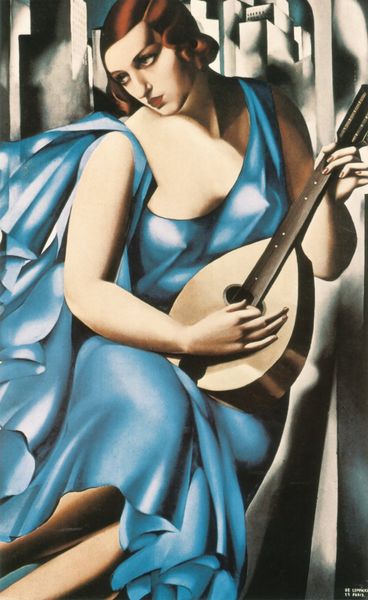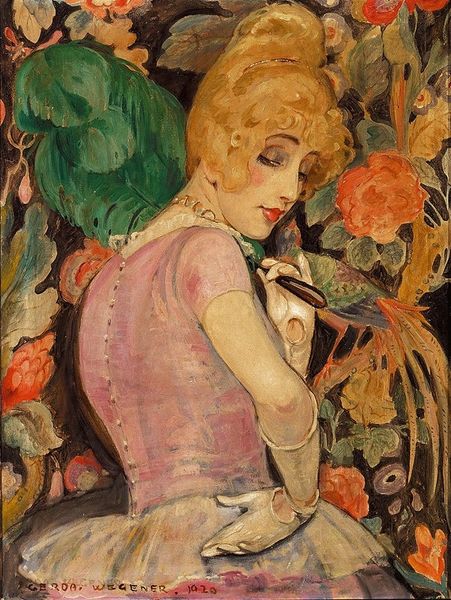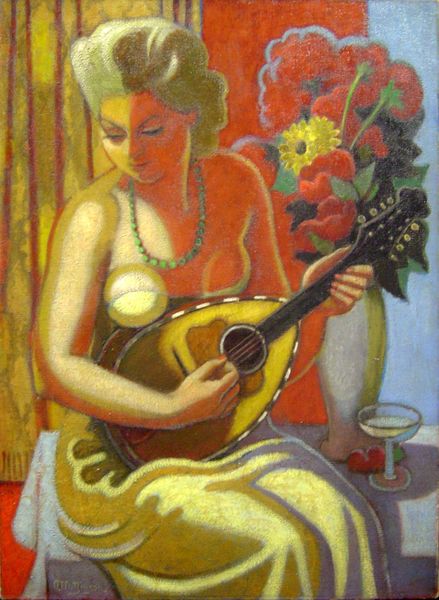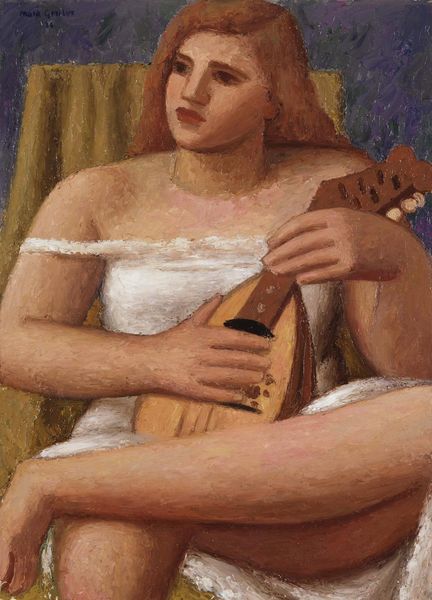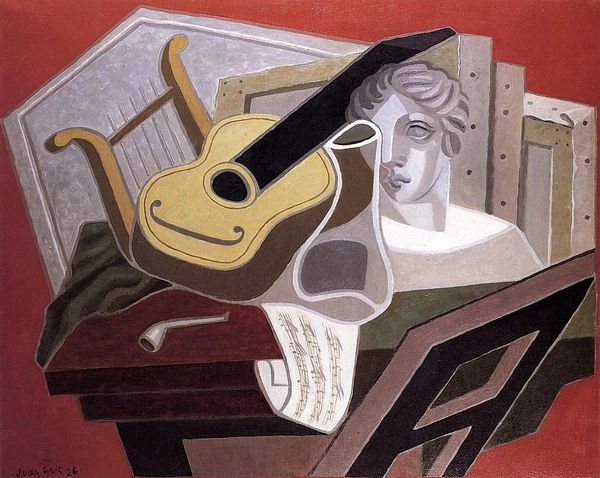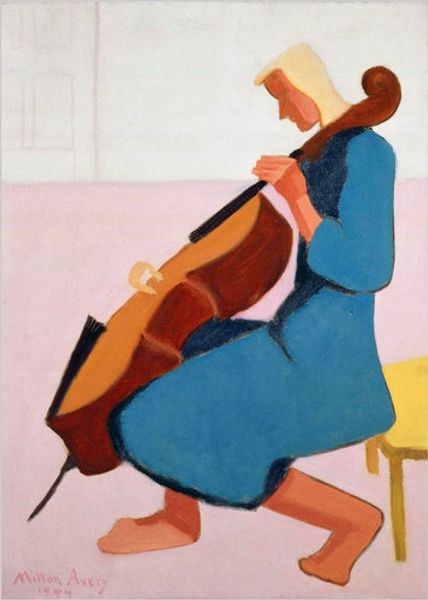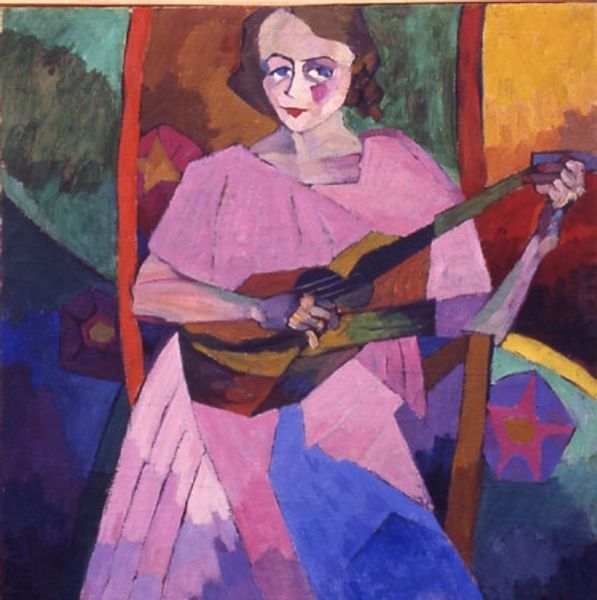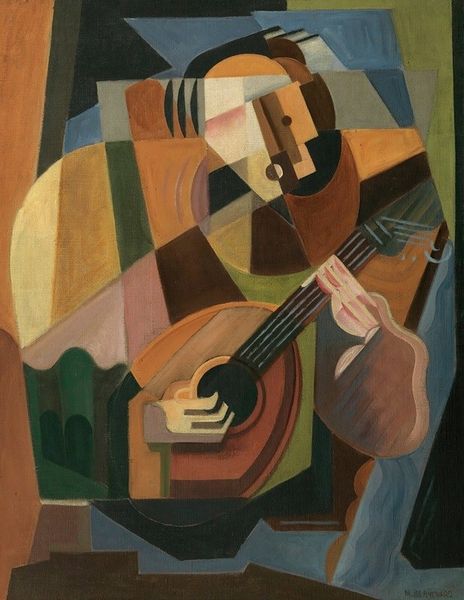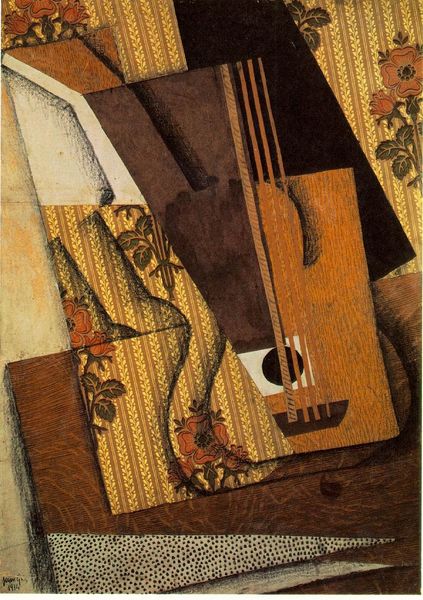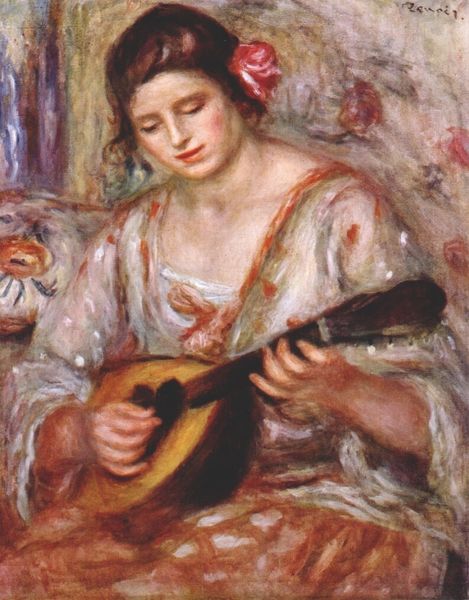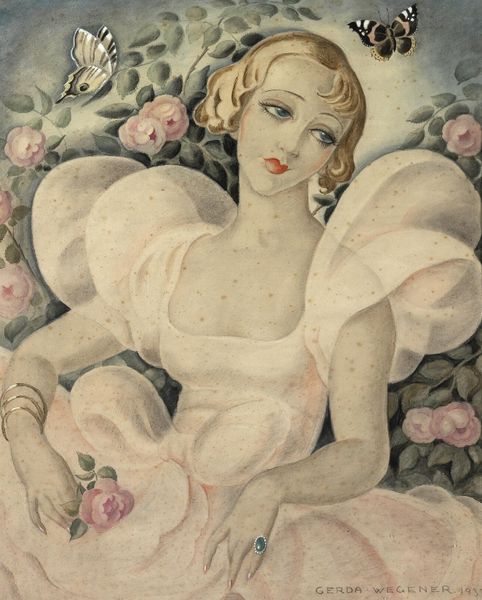
Copyright: Public domain
Curator: Wegener's "Air De Capri," painted in 1923, depicts a moment of quiet intimacy. Note how the composition pulls us into their personal sphere, against the backdrop of Capri. Editor: The guitar dominates the image. The pale wood really pops! It speaks to the artist's engagement with the tactile and crafted nature of everyday life, juxtaposed with what I can only describe as almost mournful expressions. Curator: I agree. Wegener was fascinated by portraiture, and especially group portraiture, using it to comment on social mores and private experience during a pivotal moment in the early 20th century. It's not just a record of two women with a guitar; it's a story about the constraints and possibilities within their social context. Editor: The background is simplistic, yet feels meticulously chosen. The villa feels deliberately rendered in pastels, while the women are shaded darkly—oil, right? Curator: Oil on canvas. You can see Wegener plays with the traditional materials but her style is also a nod to Art Nouveau. She challenges viewers through her focus on female companionship. Editor: Exactly! You can feel the materiality in Wegener's bold use of pigment. This attention to material production also emphasizes their relationship, something beyond the sum of its visual parts; what it does for us as a commentary on women's domestic life. Curator: Indeed, and her choice of portraying them in Capri…consider it: Capri became a haven for artists and intellectuals. It added an important dimension to her narrative of the "New Woman." Editor: And, what I like is how Wegener is pushing against "high" art, elevating what's made by hand in women's leisure, into a valid subject. A space for craft that offers comfort, too, a material space to call their own. Curator: Seeing how the themes of social context and intimate exchange are woven through it allows us a greater insight. Wegener used the tools available to her, commenting on and shaping the narrative of her time. Editor: Agreed! And seeing it as more than a quaint visual, a moment in time—it challenges our view on artistry, production and worth.
Comments
No comments
Be the first to comment and join the conversation on the ultimate creative platform.
